 | |||
 |  |  |
 |  |
 |  | ||
 |  | ||
 |  | ||
| Written by Howard Lamey and Paul Race for Big Indoor TrainsTM |
|
The "loggies" are a variety of putz house made from corrugated cardboard with the "sheath" missing on one side. Some are built to standard putz house proportions, while others are shaped more "creatively." This example is relatively conservative, but you can see that once you've built this one, you can apply what you've learned to many other kinds of structures. - Paul Building a Vintage-Style Cardboard Log HousePeople who collect vintage cardboard Christmas houses have come up with names to help them classify the various kinds of buildings. This one is called a "loggie," for obvious reasons. They appeared some years after the basic "putz" houses with smooth walls and glitter. They were also more likely to be "skewed" on their bases than most other kinds of putz houses - that is, to say, they look "right" from the front, but from the top you can see that they are anything but square. For this loggie project, however, I chose a more traditional profile, although I set it at an angle on the base. Most of the construction is similar to building a smooth-walled glitterhouse, so we will refer to articles on glitterhouses in general from time to time.What You Will NeedIf you are going to build cardboard houses, stop throwing away used, clean cardboard yesterday. Save cereal boxes, the backs of writing tablets, anything flat, firm and clean, that you can save. In addition, for this project you'll need:
Print The PlansThis project has a structure pattern that you print out and transfer to cardboard.You may print the structure pattern on any sort of paper, since you're simply using this to transfer the plan to your cardboard medium.
If neither of those work, contact Paul and ask him for help - that's his department. :-) Building the BaseThe base is a rectangular "box" that is decorated before the building is installed. It should be about 4" x 5" x 1/2".
Building the BuildingFor sanity's sake, make certain that all of your measurements are good before you glue the patterned paper on.
Make the WindowpanesYour windowpanes can be made from colored celophane, cereal-box lining with colored paper behind it to give it a tint, "vellum" for printers, or colored paper. All of these looks are true to various originals. I chose to create my windows for this house from "craft store" yellow paper. Further down, you'll see a loggie in which I used red celophane.
For my doorways, I used reproduction graphics from Papa Ted's Place the Internet's largest resource for putz house collectors. Warning! If you're checking this article out at work, mute your speakers before you click on Ted's link - Ted likes Christmas music, and almost every page has a song that starts automatically when you jump to that page. Some are loud. :-) Building the Chimney and Cap
Assembling the House
Choose Finishing DetailsFor this house, I selected a dark brown color and a "sprinkling of snow" look. However, it's possible to choose another color and a "deluged with snow" look. Both looks are common in the original. You'll also notice that the light-colored version is a mirror to the version in this article. Again, both are authentic.
Paint the Building Your Desired ColorThe deeper, chocolate brown I chose for this project is very common, and it helps your loggies stand out from a collection of other vintage houses. You may also use a darker color for the roof, then dab it with white paint for snow if you want.
When the base coats were dry, I lightly dry-brushed the outside edges of the logs and roof texture with contrasting yellow and browns to provide a weathered look and make the texture stand out even more. Paint the Base as DesiredHow you finish the base depends on which look you are going for:
Final Assembly Assemble your building before you start applying glitter.
Assemble your building before you start applying glitter.
You may decide that you like this look and want to keep it this way. Fine. I suggest you seal the building and base with several light coats of an acrylic satin spray. This will "lock down" the sawdust and keep the building from getting quite so dusty. Optional ?Hint of Frost/Light Snow? Details If you wish to give your loggie a "seasonal" flavor, you may add a ?hint of frost/light snow? to the roof, walls, and base since a heavy coat of glitter and snow would cover the texture. For the project loggie, I dabbed on white glue (like Elmer's), poured clear glitter over it, and tamped it a bit to get it set into the glue. The glue dries clear. I even treated the trees to some glitter. If you wish to give your loggie a "seasonal" flavor, you may add a ?hint of frost/light snow? to the roof, walls, and base since a heavy coat of glitter and snow would cover the texture. For the project loggie, I dabbed on white glue (like Elmer's), poured clear glitter over it, and tamped it a bit to get it set into the glue. The glue dries clear. I even treated the trees to some glitter.
As an alternative, you could give the loggie "solid" patches of snow by dabbing on white paint, then when that had dried, spreading Elmer's or similar glue, and dosing with clear glitter. The result would be somewhere between the photo above right and the photo below right. Next, seal the building and base with several light coats of an acrylic satin spray. This will "lock down" the sawdust and keep the building from getting quite so dusty. Optional "Heavy Snow" Details If you wold rather give your loggie a mid-winter appearance, you can dab white paint on parts of the roof and base. When that has dried, spread a thin layer of "white glue" (like Elmer's) over the white paint, then apply clear glitter. In the version to the right, I didn't glitter the "bottle brush" trees since they already had "snow." If you wold rather give your loggie a mid-winter appearance, you can dab white paint on parts of the roof and base. When that has dried, spread a thin layer of "white glue" (like Elmer's) over the white paint, then apply clear glitter. In the version to the right, I didn't glitter the "bottle brush" trees since they already had "snow."
ConclusionBecause I went with the "light frost" version on this project, I can use the result both on my Halloween and my Christmas setups. It looks pretty good with our Spook HillTM Halloween community, for example. A nice companion piece would be the "frosted" version of our Now that you've done one loggie, it will be easy to see how you can create enough variations to build yourself a whole town. Semi-Commercial AnnouncementNow that I'm in "retirement," this hobby has become a sort of avocation for me. Several folks have commissioned me to build specific houses for them. So if you'd like me to "bid" on a cardboard house for you, or if you have any questions at all, please use this link, and Paul will forward your information to me.Also, if you have a similar project you'd like to share with your fellow readers and hobbyists, we'd love to add it to our site, and we'll be sure to give you full credit for your contribution.
Other Articles about cardboard houses include:
To Return to the BIG Indoor TrainsTM Primer Page, click here. |
 


|

|

|  |
 |
 |  |  |
Note: Big Indoor TrainsTM, Big Train StoreTM, Family Garden TrainsTM, Big Christmas TrainsTM, Garden Train StoreTM, and Trains and TownsTM are trademarks of Breakthrough Communications (www.btcomm.com). All information, data, text, and illustrations on this web site are Copyright (c) 1999, 2000, 2001, 2002, 2003, 2004, 2005, 2006, 2007 by Paul D. Race. Reuse or republication without prior written permission is specifically
forbidden.
Big Indoor Trains(tm) is a participant in the Amazon Services LLC Associates Program, an affiliate advertising program designed to provide a means for sites to earn advertising fees by advertising and linking to amazon.com.
For more information, contact us.

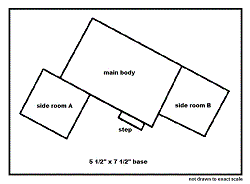
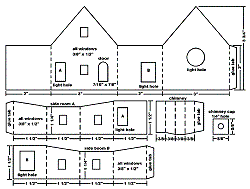

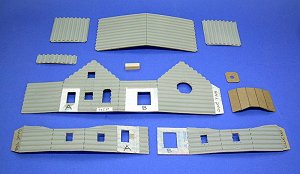


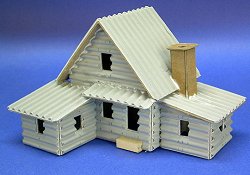
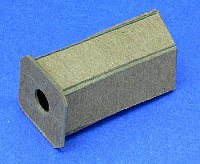

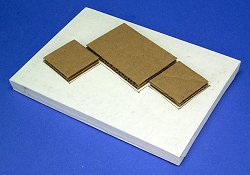
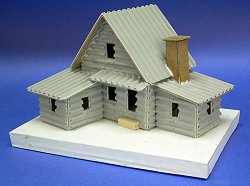
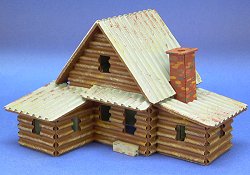


 Barn and Silo
Barn and Silo